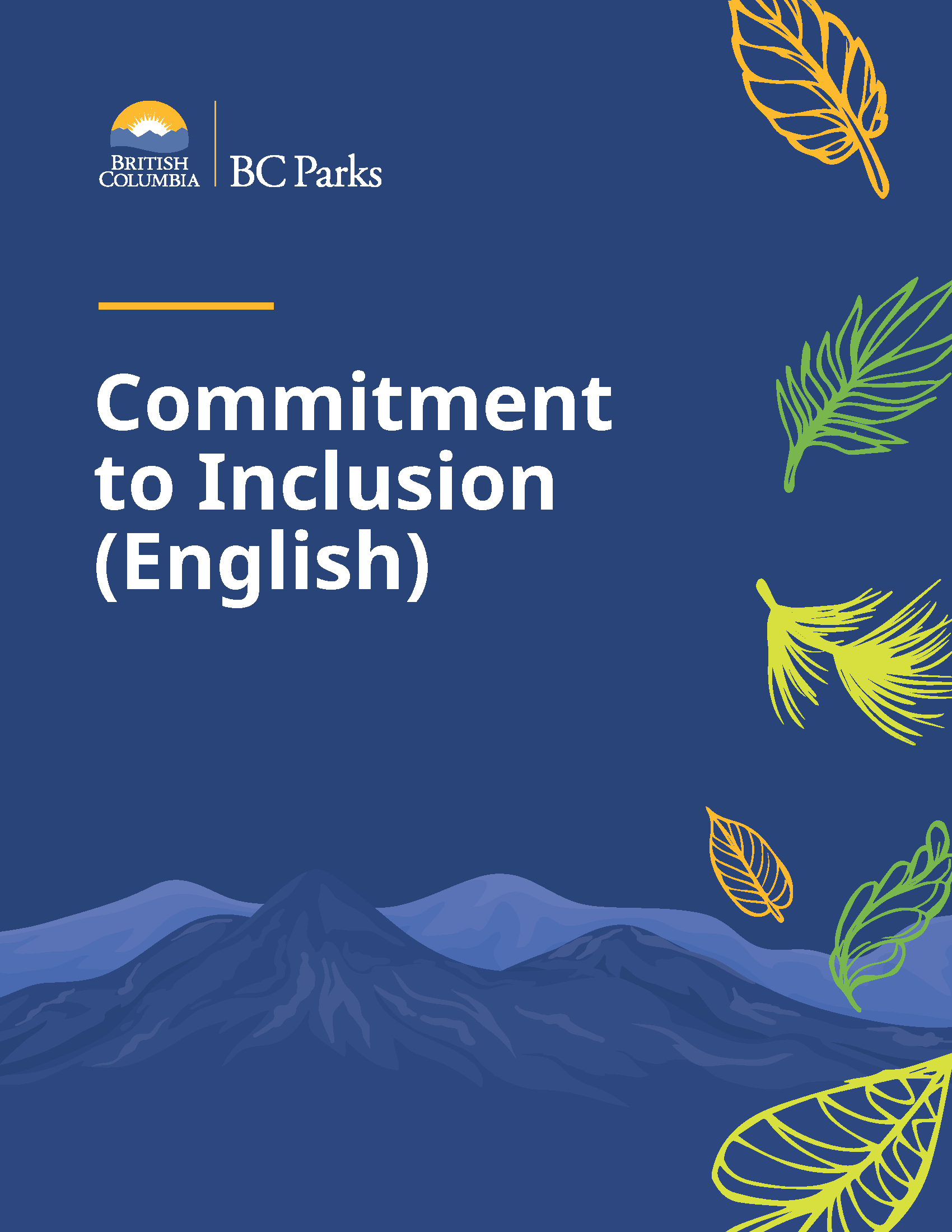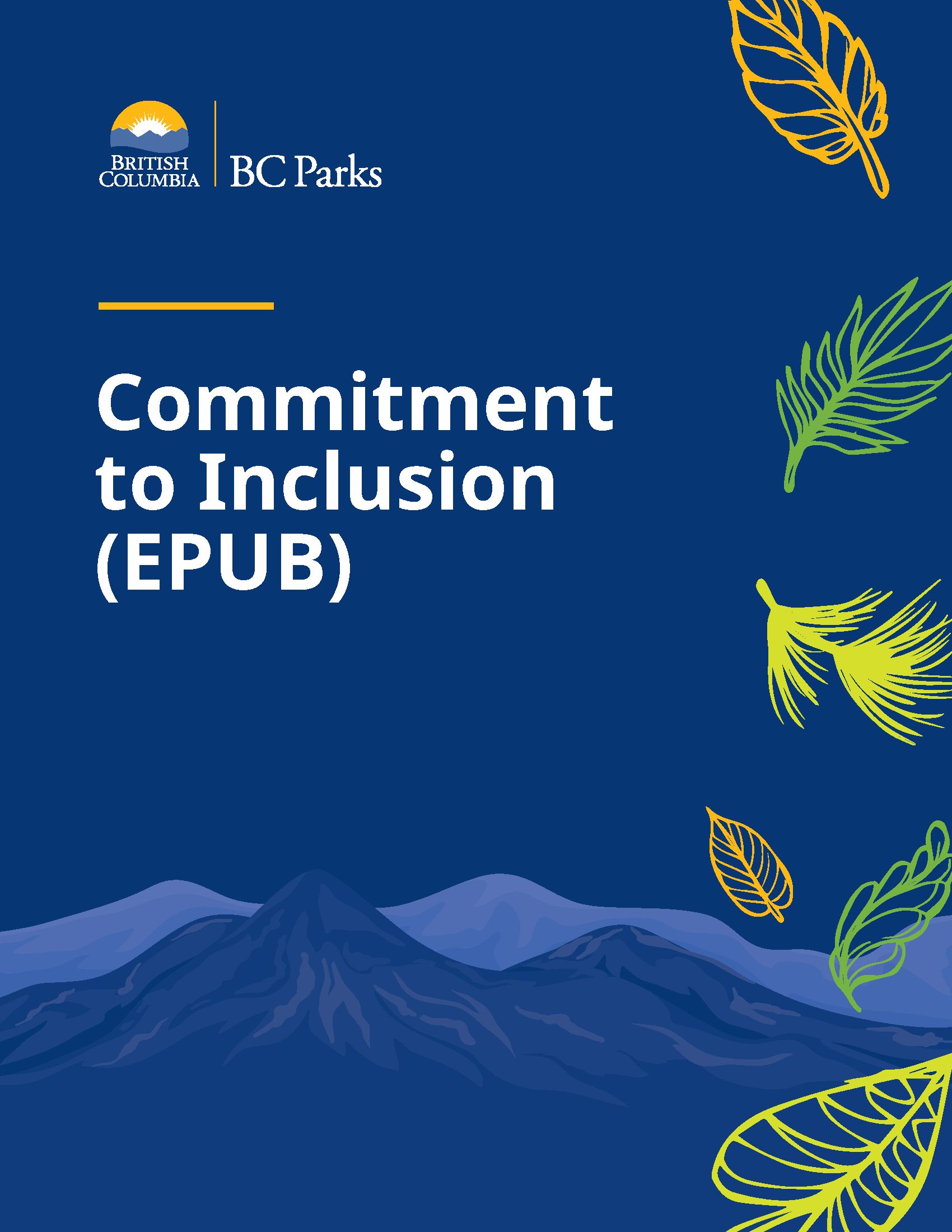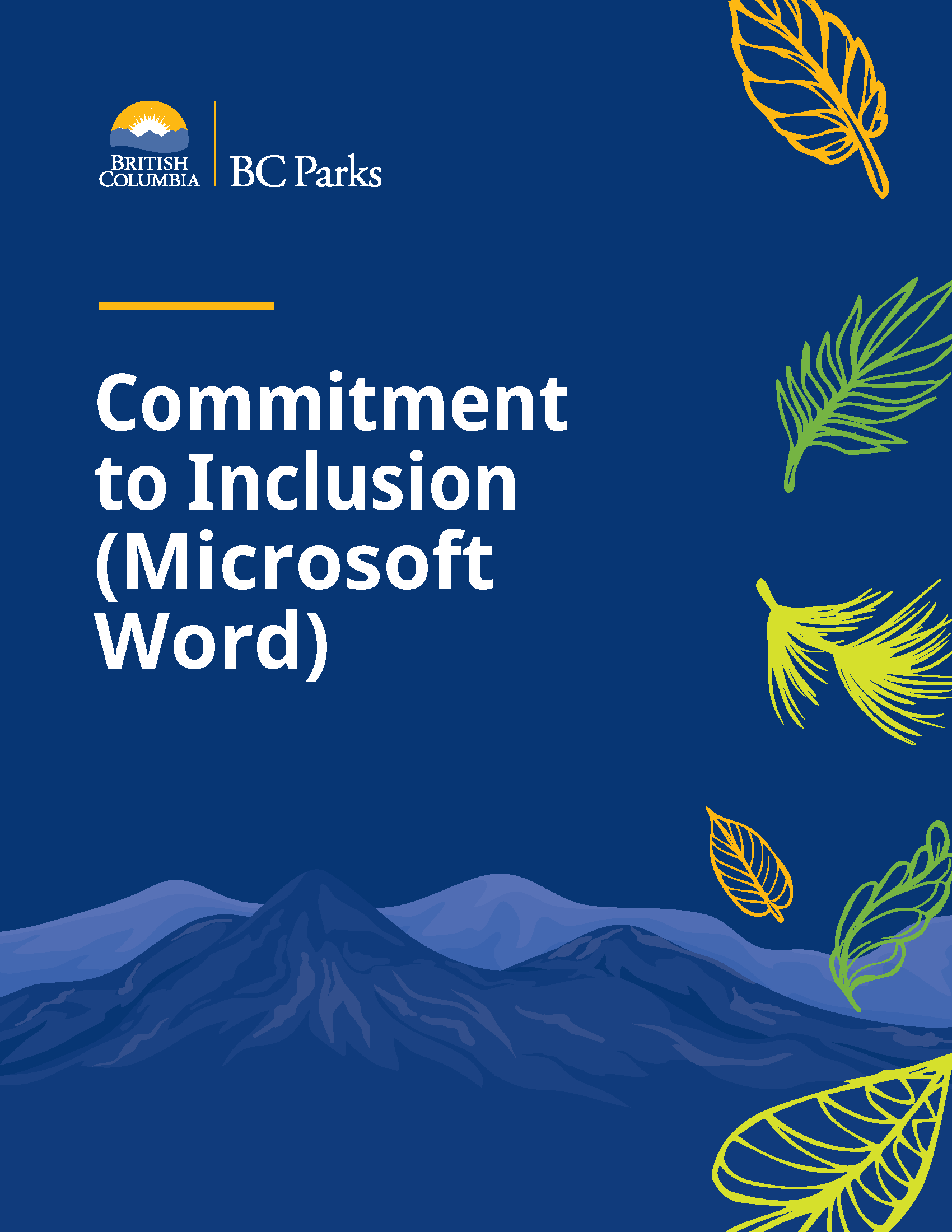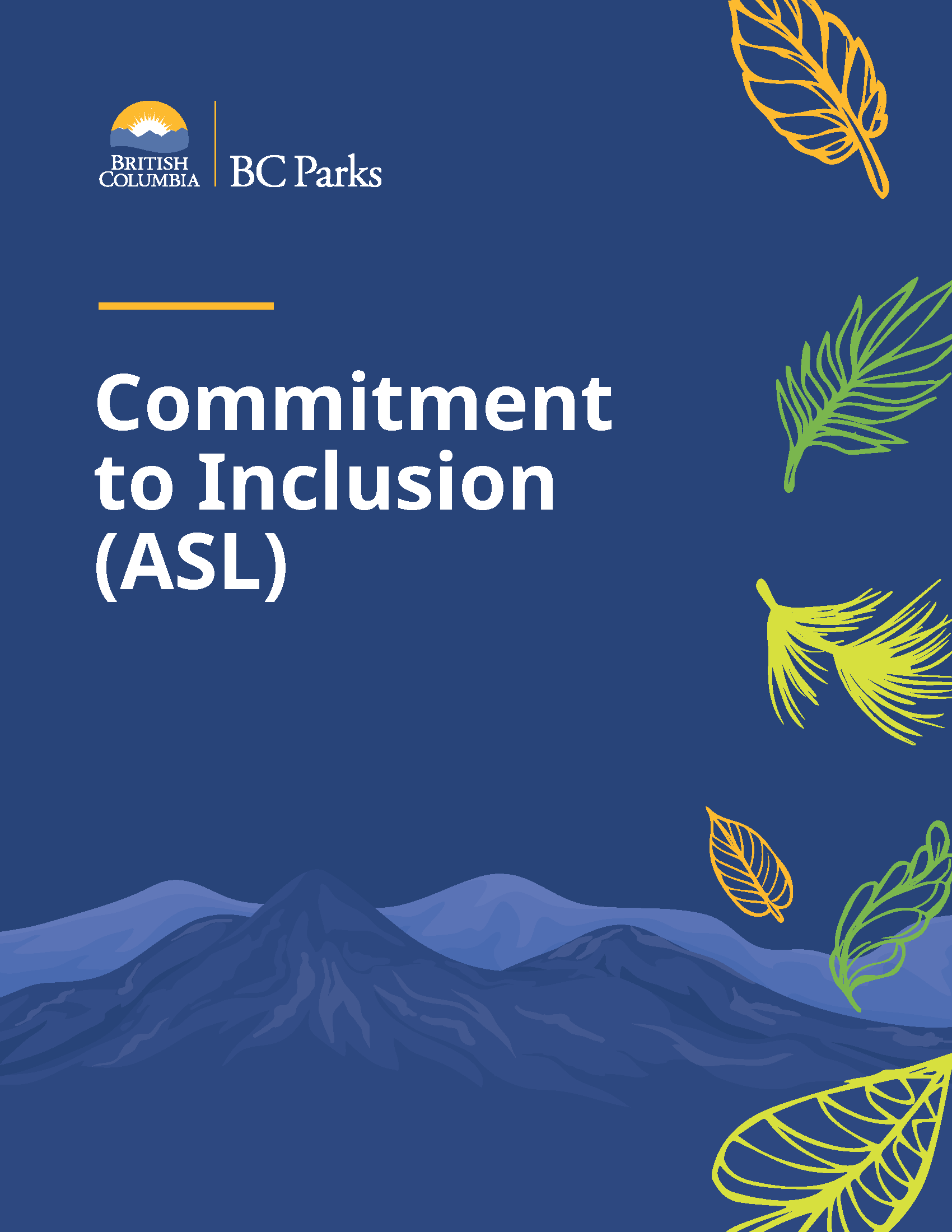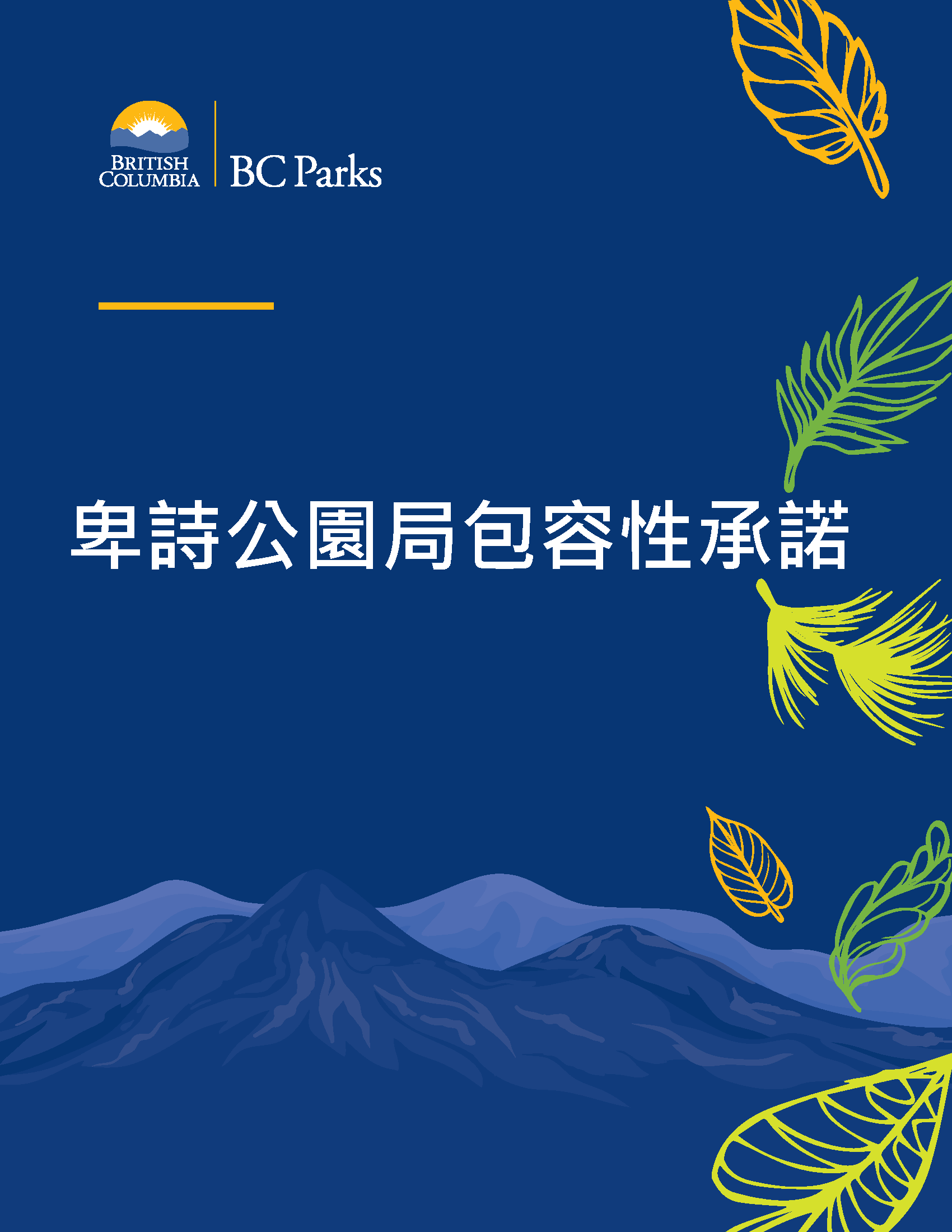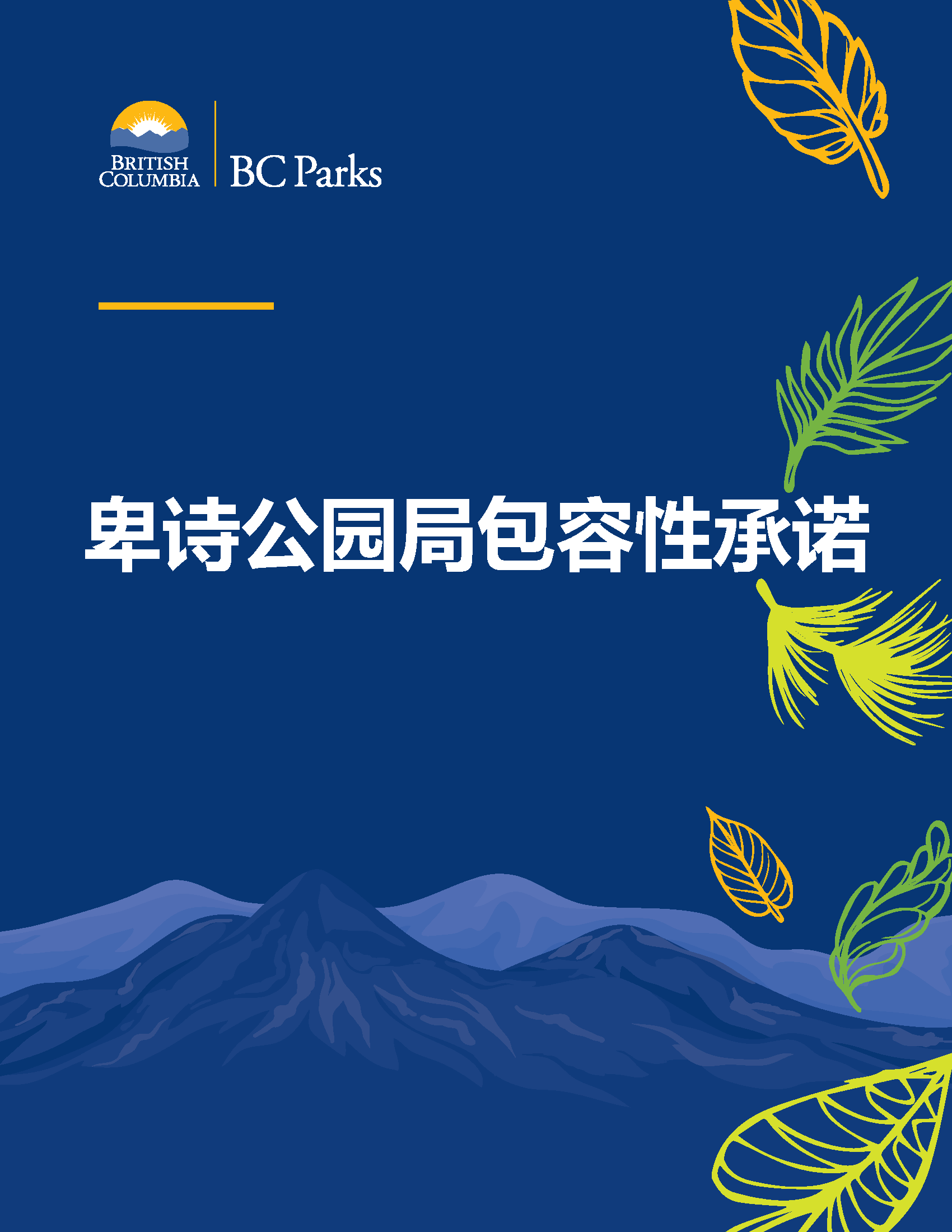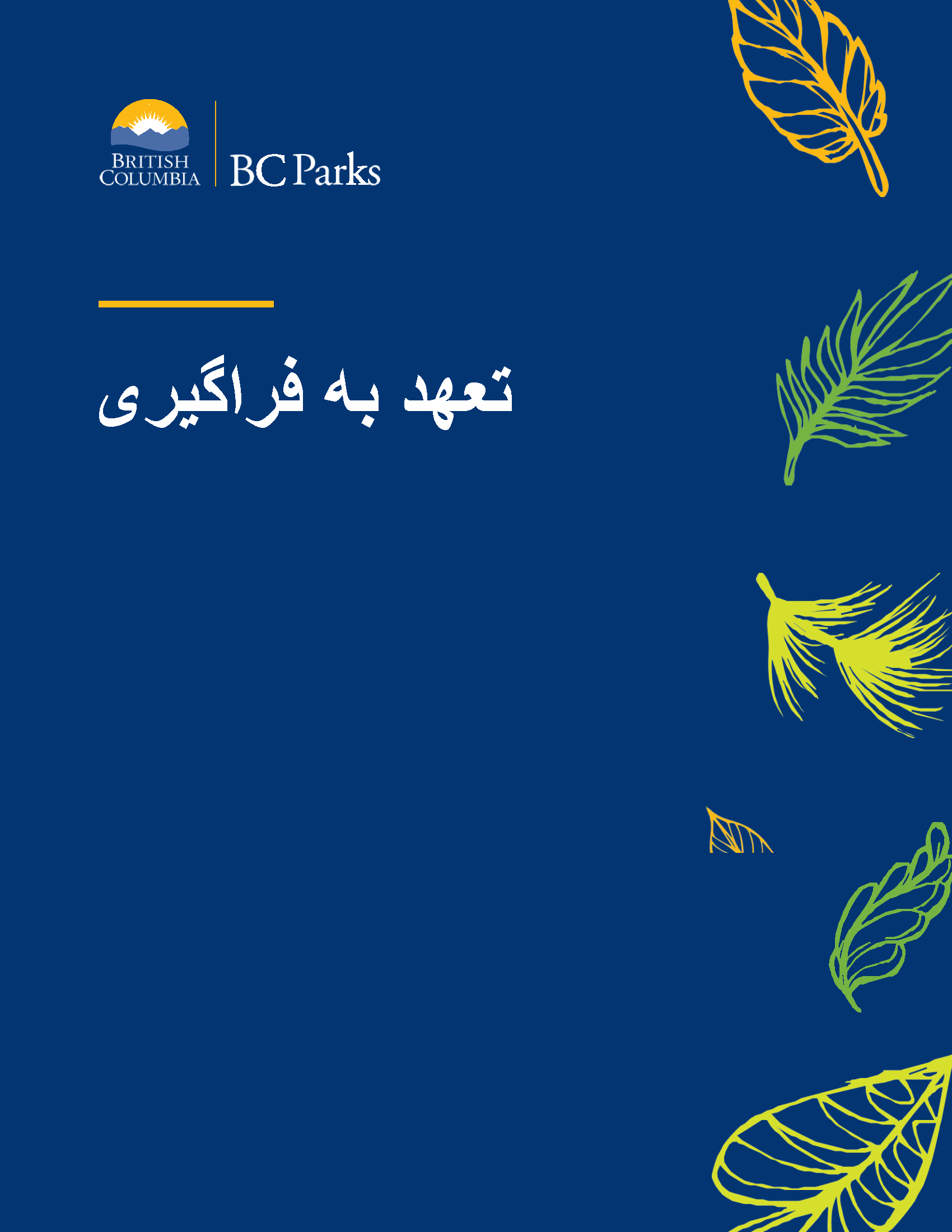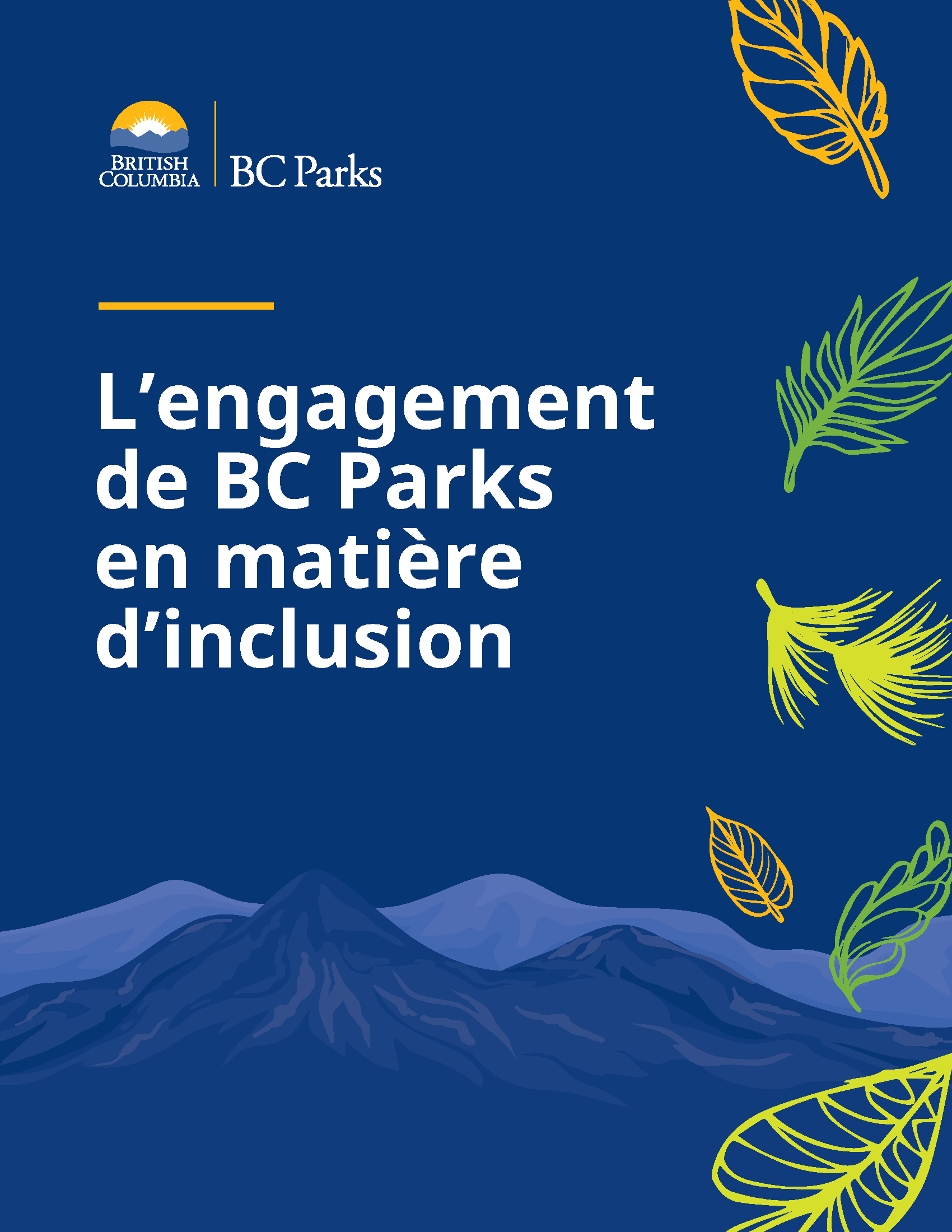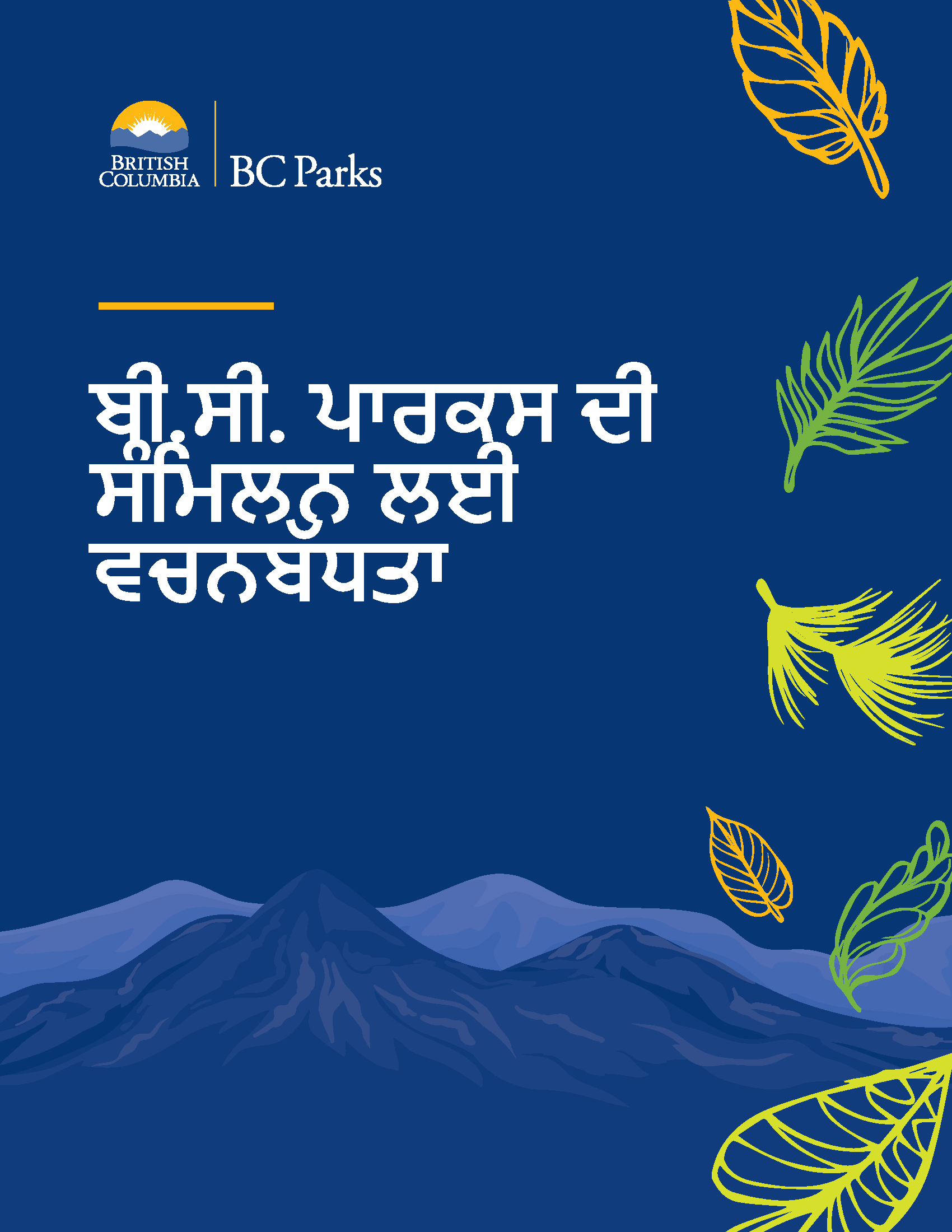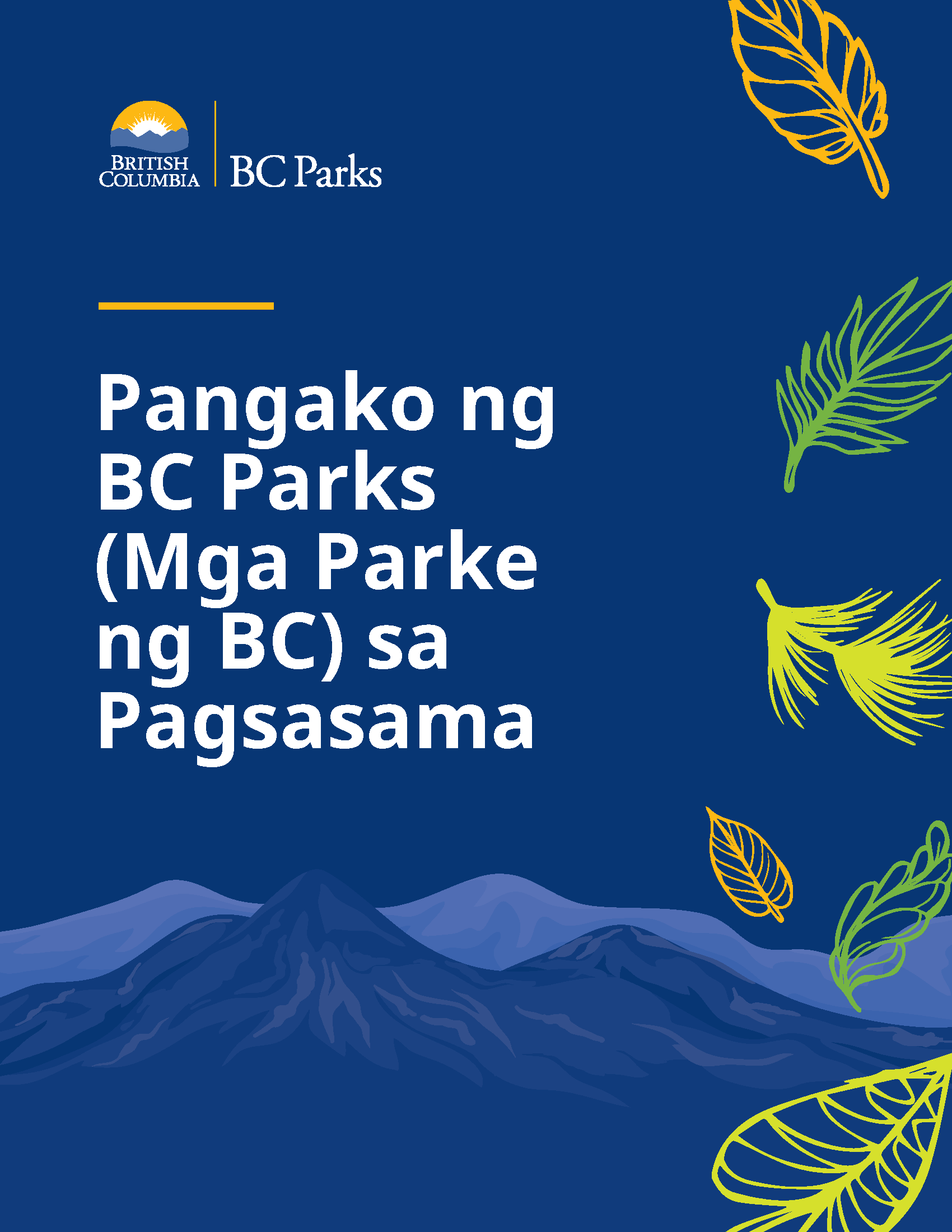Our Vision: B.C.’s provincial parks are welcoming and meaningfully accessible to all.
People of all ages and backgrounds love British Columbia’s extraordinary natural beauty. For some though, there are barriers to feeling included, welcomed, and safe in B.C.’s outdoor spaces. We acknowledge that some people and groups have been excluded from BC Parks due to both visible and invisible barriers.
To address these barriers, we created BC Parks’ Commitment to Inclusion in collaboration with diverse community partners. This is our pledge to work toward a provincial parks system that is welcoming and meaningfully accessible to everybody. It outlines how we will prioritize inclusion and builds a foundation for the work ahead.
Read BC Parks' Commitment to Inclusion [PDF]
Look on this webpage for:
- Access to the full Commitment to Inclusion in various languages and accessible formats
- Examples of our past and ongoing inclusion projects
- A plain-language summary of our Commitment to Inclusion
- How to find information on accessibility at specific parks
- Suggestions for how your organization can partner with BC Parks
Translations and accessible formats
We offer BC Parks’ Commitment to Inclusion in the following formats:
- English [PDF]
- English [EPUB]
- English [Microsoft Word]
- ASL Video
- Traditional Chinese [PDF]
- Simplified Chinese [PDF]
- Farsi [PDF]
- French (Français) [PDF]
- Punjabi [PDF]
- Tagalog [PDF]
We also offer BC Parks’ Commitment to Inclusion in braille. To request a braille version, please email parkinfo@gov.bc.ca.
Inclusion work already happening
Even though BC Parks’ Commitment to Inclusion is focused on the future, there is already work underway. Here, we highlight a small sample of the inclusion-related projects we’ve been working on.
For details about the projects and partnerships in the photos below, and alt text for each photo, visit page 21-23 of BC Parks’ Commitment to Inclusion.
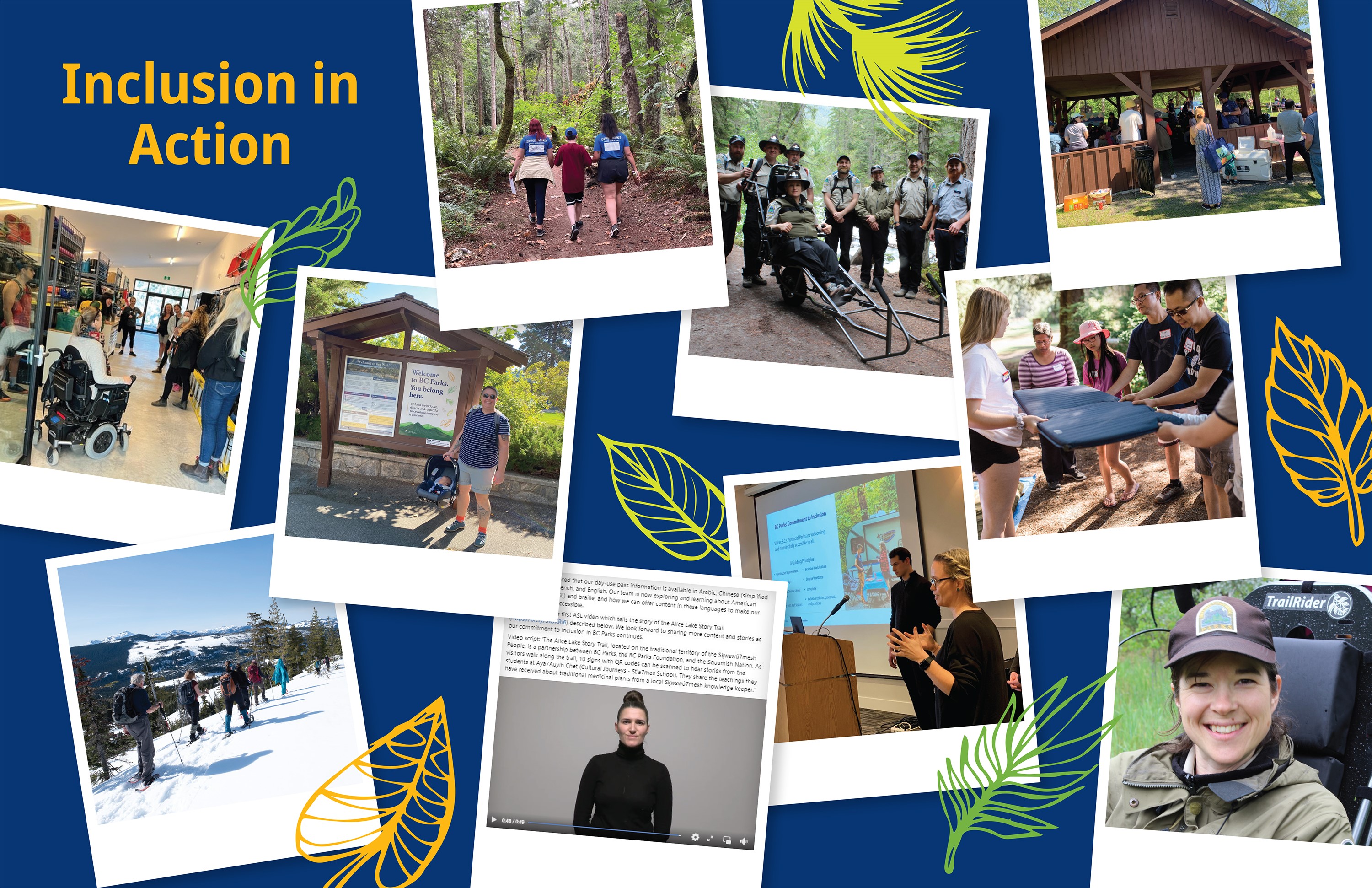
- Installing new signs at the entrance of hundreds of frontcountry areas. These signs reflect our commitment to inclusion, stating “You belong here. BC Parks are inclusive, diverse, and respectful places where everyone is welcome.”
- Inviting diverse participants to join events and partnerships. For real-world examples, read our blog posts on an engaging learning experience for new Canadians and a conversation with Power to Be.
- Helping community organizations purchase and maintain adaptive recreation equipment so everyone can enjoy the benefits of recreating in provincial parks. For example, see this story on how adaptive recreation equipment is improving beach accessibility. To learn more about adaptive recreation and find adaptive equipment rental opportunities across the province, visit our adaptive recreation webpage.
- Providing inclusion-related training opportunities for BC Parks employees. This includes adaptive equipment training like the Northern TrailRider Workshop with Power to Be.
- Developing standards to make publications as accessible as possible. We’ve made the Commitment to Inclusion available in multiple translations and accessible formats, and begun using American Sign Language (ASL) in our social media content.
- Working with local organizations to create customized interpretive experiences that remove barriers and meet their needs. This work is done in partnership with the BC Parks Foundation’s Discover Parks Ambassador Program.
- Designing our website to meet the Web Content Accessibility Guidelines WCAG 2.1 AA standard.
Plain-language summary
What is BC Parks’ Commitment to Inclusion?
BC Parks worked with our partners and members of the community to create BC Parks’ Commitment to Inclusion. This commitment celebrates the equity, diversity, and inclusion (EDI) work that has already happened. It also launches a renewed focus on EDI-related work for years to come.
What is the vision of BC Parks’ Commitment to Inclusion?
Our vision is that B.C.’s provincial parks are welcoming and meaningfully accessible to all.
What are the eight principles in BC Parks' Commitment to Inclusion?
Principles:
- Engagement with park visitors
We seek opportunities to learn from a range of people and organizations and understand the changing needs of parks visitors.
- Listening to diverse lived experience
We listen to visitors, volunteers, and partners to understand what people need to feel safe and respected in BC Parks.
- Inclusive policies, processes, and practices
We seek to understand the negative impact of past policies and apply what we learn to our work ahead. We make inclusion a key consideration in everything we do.
- Universal Design
We follow the principles of Universal Design so BC Parks can be enjoyed as much as possible by everybody.
- Continuous improvement
We focus on long-term innovation, growth, and learning, and are always open to changing our approach as we go.
- Longevity
We practise a culture of inclusion and a focus on the future. We plan for long term engagement, maintenance, and adaptation in all inclusion projects.
- Inclusive work culture
We foster a fair and respectful workplace that recognizes diversity as a strength and empowers every employee to flourish.
- Workforce diversity
We cultivate a workforce that reflects the diversity of British Columbia because we know that diversity strengthens our organization.
For more information on these principles download the full BC Parks Commitment to Inclusion [PDF].
Park accessibility information
BC Parks has been, and continues to be, a leader in promoting accessibility in parks. We strongly believe that people living with visible and invisible disabilities should be able to enjoy outdoor activities. To learn more about accessibility in BC Parks, visit our accessibility page.
Want to know more about our work to improve accessibility to our recreational facilities, trails, and natural features? Download our Universal Design guide for frontcountry parks [PDF].
To find accessibility information for specific BC Parks, visit our park accessibility page.
Get involved
As we embark on our Commitment to Inclusion, we will continue collaborating with community organizations. If you are a member of a community organization and want to help us realize our vision, please contact parkinfo@gov.bc.ca.
We acknowledge that this work is systemic and long-term. We are committed to sharing our progress and challenges with you as we put our Commitment to Inclusion into practice.
Follow our progress on Facebook, Instagram, and the BC Parks blog.

